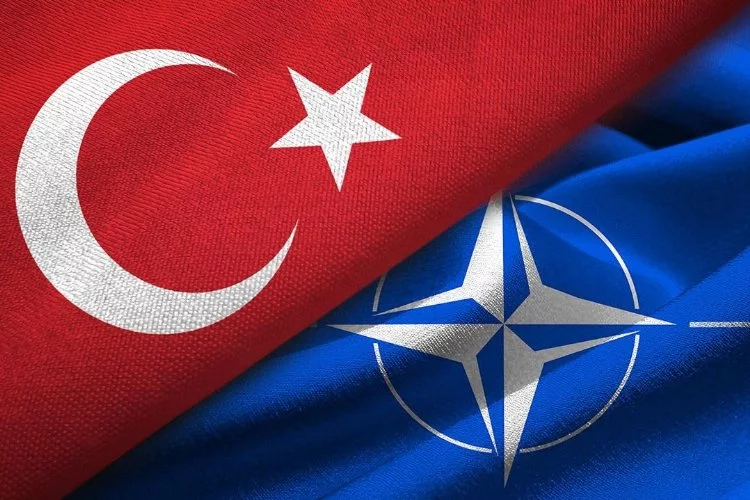Where Does Istanbul’s Name Come From?

ISTANBUL “The Door to Happiness”
ANATOLIA REPORT
June 2022
Istanbul has been given various names throughout history. These names varying in different times of history are Byzantion, Augusta Antonina, Nova Roma, Constantinople, Konstantiniyye, and the present Istanbul. The Ottomans used the name Istanbul with the sound “i”, which was used as a change in the pronunciation of the names “Istinpol”, “Estanbol”, “Istinbolin”, “Stinboli”, and “Sitanpul” used in the Roman period. Later, they named it Islâmbol, which means the center of Khilafah. Over time, its transition to Turkish became Istanbul.
Byzantion is the first known name of Istanbul. In 667 BC, Dorian Greek settlers from the city-state of Megara in Ancient Greece established a colony in today’s Istanbul and the new colony is named after their king Byzas or Byzantas. It is also referred to as Byzantium in some sources. Byzantium is the Latinized version of the city given by the Romans when they conquered it in the 1st century AD. Augusta Antonina is the short term name of the city, which was named by the Roman Emperor Septimius Severus in honor of his son Antonius.
When the Roman Emperor Constantine I was declared the capital of the Roman Empire in 330 AD, he named the city Nova Roma, which means “New Rome” in Latin. With the death of Emperor Constantine, I in AD 337, the name of the city was changed to Constantinople, which means “city of Constantine” in his honor. Constantinople remained the city’s official name throughout the Eastern Roman (Byzantine) Empire. But Constantinople was referred to by the locals only as (Polis), which means “city” in Greek. After Sultan Mehmed the Conqueror conquered the city in 1453, the city was declared the fourth capital of the Ottoman Empire, and Constantinople continued to be used for a long time. After the Republic of Turkey was established on 29 October 1923, foreigners continued to use the name Constantinople instead of Istanbul for 7 more years.
Kostantiniyye is the Arabic form of Constantinople. It is the most known and most used name in the Islamic world. Constantinople, which means “city of Constantine” in Greek, means “the place of Constantine” in Kostantiniyye Arabic. However, in some periods, the Ottoman authorities used names such as Dersaadet (Arabic: “Happiness Gate”), Darâliye (Arabic: “Yüce Kapı”), Bâb-ı Âli (Arabic: “Yüce Kapı”), and Pâyitaht (Persian: “The Leg of the Throne” or “Capital”).
The Historical Development of the Istanbul and Its Names
Istanbul has a settlement history of 300,000 years, a metropolitan history of around 3000 years, and a capital history of 1600 years. Throughout the century, it has been the sole ruler of the region in its wide geography from the Danube River in the west to the Persian Empire in the east. The first traces of human culture were found during the excavations carried out in the Yarimburgaz Cave, located on the edge of Küçükçekmece Lake. It is believed that Neolithic and Chalcolithic people lived around the lake during this period.
Megara residents are accepted as the first significant settlers. Istanbul was founded as an ancient Greek city-state called Byzantion during this period. Soon it grew stronger. It was captured by the Roman Empire. The establishments of the present Istanbul were laid in the seventh century BC. The city of “Byzantion” was founded by the people of Megara in 667 BC. By displaying a city-state structure for a long time, Byzantium became a dominant power in the entire ancient Greek region thanks to economic development due to its strategic location.
In this period, Istanbul will be Byzantium, Latinized, and become one of the important cities of the Roman Empire as Byzantium, its name will change and it will become the capital of the Roman Empire as Constantinople. Byzantion passed into the hands of the Roman Empire in 196 BC. Especially during the Emperor Vespasian period, its name is Byzantium in Latin. In 196, he was punished and severely damaged by the Roman Emperor Septimius Severus for making an agreement with the Persian Emperor Pescennius; the city is rebuilt throughout. It was declared the capital of the Roman Empire by Constantine I in 330.
Istanbul’s capital history began 65 years before the separation of the Roman Empire into East-West. Byzantion was made the capital of the Roman Empire as ‘Nova Roma (New Rome)’ at the request of Emperor Constantine the Great in 330, and the name of the city was changed from Byzantium to Constantinople after the death of the emperor. Constantinople, which replaced Rome with its invasion and collapse, becomes the capital of the Eastern Roman Empire, the successor state of the Roman Empire, which was divided into two in 395. During this period, Istanbul will become the capital of the Byzantine Empire as Constantinople.
Constantinople became the capital of the state in 395, which was first established as the Eastern Roman Empire and later became the Byzantine Empire after the collapse of the Western Roman Empire. Constantinople is also the brightest and richest city in the world in the early Middle Ages. Constantinople, which was occupied by Latins between 1204-1261, became a part of the Latin Empire. It was the capital of the Byzantine Empire until 1453 after the Latin rule. Istanbul will be the capital of a great world empire during the Ottoman period, and it will dominate the lands spanning three continents for more than 400 years.
After the conquest of the city by Fatih Sultan Mehmed on May 29, 1453, the capital period of the Ottoman Empire begins. The city, which was called Konstantiniyye by the Muslims, was called the ‘E Stin Polis’ (From the Capital / City) by the Greeks. The Ottomans also used this name and made it the shape of Istanbul. The Russians called the city Çarigrad (Tsar’s city), and its name in the Balkans was Stambul. On October 29, 1923, when the capital of the Republic of Turkey was declared as Ankara, Istanbul lost its capital property. In 1930, the name Constantinople was completely abolished and its official name became Istanbul.
Where Does the Name Istanbul Come From
Istanbul, whose history goes back 8,500 years with the ruins found in Yenikapı and which is “the only city that has been the capital of 3 empires in the world”, has been called different names throughout its history. After the Ottoman Empire conquered the city which was called “Byzantion” for 1004 years and “Constantinople” in 1116 years, it did not enter into a discussion about what its name would be. The name of the city, which was also called “Konstantiniyye”, “Stanpolis”, “Dersaadet”, “Asitane”, “Darülhilafe” and “Makarrı Saltanat” in the Ottoman period, was accepted as “Istanbul” after the declaration of the Republic.
The city, whose history dates back to 8500 years ago with the ruins found in Yenikapı, founded a colony by the Dorian Greek settlers from Megara in Ancient Greece in 667 BC and named the new colony “Byzantion” in honor of their king Byzas. At the point when the city was pronounced the capital of the Roman Empire in 330, it was called “Nova Roma”, signifying “New Rome” in Latin, however, this name was not embraced a lot. After the death of Emperor Constantine, I in 337, the name of the city was changed to “Constantinople” which means “Constantine’s city” in his honor. Constantinople remained the city’s official name throughout the Byzantine Empire.
After the Ottoman Empire conquered the city called “Byzantion” for 1004 years and “Constantinople” in 1116 years, it did not enter into a name fight. Experts stated that after the conquest of Istanbul by the Ottomans, there were many names, some official names were used very little and some were adopted by the public. Emphasizing whether the Ottoman sultans never stuck on the name, experts said. There is one exception to this. Sultan Mustafa III especially uses Islambol, which means the city of Islam. It is known that the most used name in the Ottoman period was “Konstantiniyye”, which was translated into the Arabic language of Constantinople.
The Origin of the Word “Istanbul”
When the city is mentioned, Istanbul within the walls comes to mind. In my opinion, it is more important where Istanbul’s name comes from than where Istanbul is. At that time, they never called the places outside the section inside the city wall Istanbul. This is the most confused and common mistake right now. It separates Eyüp from Istanbul, when the opposite shore is mentioned, Galata comes to mind, not Kadıköy. When it comes to crossing over, there is a line from Karaköy to Galata and from Galata to Kuledibi. There is no more Taksim, and there is Üsküdar. Apart from that, there are Adalar and villages on the Bosphorus, which are used seasonally. So the Bosphorus is not considered Istanbul. When it is said ‘I will go to Istanbul’, it means and separates the walls.
Experts stated that the Ottoman state used the names “Darülhilafe” meaning the center of the caliphate and “Makarri Sultanate” meaning the center of the sultanate, and “This is very convenient. The Ottoman does not directly engage in that fight, it defines a city from its function. Whoever says what, whether Constantinople or not, no matter what they say, it is Darülhilafe. It is Makarr-ı Saltanat. This reveals the tolerance of the Ottoman Empire and a self-confident state over all these discussions.
Experts stated that there is a debate about the beginning of the name Istanbul with the letter “I” or “i” and that Istanbul has two different spellings. Istanbul which is written with the letter “I” is used more in Istanbul Turkish. Emphasizing that they do not focus on which word is the truth, linguists said, “I believe that the idea of preserving the city’s historical place properly, preserving its appearance and historical feature and at least being the center of a certain part of the world is more important.
Expressing that the name Istanbul, which was officially used after the Republic, comes from Greek and was a name used in the past, specialists state that the source of Istanbul is a blend of the words “stan” signifying “to the city” and “police” signifying “city”. Experts said, “Why did they say Stanpolis? Because people who came here would ask the city on the way, ‘How can we go to the city? That is why the name of the city remained ‘Stanpolis’ and transformed into Istanbul in time.” Specialists expressed that the city had numerous names, for example, Konstantiniyye, Dersaadet in the Ottoman Empire, a portion of the utilization of the name Istanbul with the republic.
The Old Names of Istanbul
I have also included the names given to Istanbul throughout history due to the discussions on the name of Istanbul, which has been in dispute from time to time by historians and has been brought to the agenda in diplomatic relations.
- Byzantion
The city, whose history dates back to 8500 years ago with the ruins found in Yenikapı, founded a colony by the Dorian Greek settlers from Megara in Ancient Greece in 667 BC and named the new colony “Byzantion” in honor of their king Byzas.
- Nova Roma
At the point when the city was pronounced the capital of the Roman Empire in 330, it was named “Nova Roma”, which signifies “New Rome” in Latin, yet this name was not embraced a lot.
- Constantinople
With the death of Emperor Constantine I, the name of the city was changed to “Constantinople”, which means “the city of Constantine” in his honor. Constantinople was the official name of Istanbul all through the Byzantine Empire.
- Stanpoli
The word ‘is ten polin’ in ancient Greek, meaning (to go) towards the city, and some of the ancient experts suggested as the etymological source of the name Istanbul.
- Darülhilafe
In the official correspondence of the Ottoman Empire, the word “Darülhilafe” was used to mean the center of the caliphate.
- Makari Sultanate
The word meaning the center of the reign.
- Dersaadet
It is one of the old names of Istanbul, which signifies “the entryway of joy”.
- Asitane
It is that this word comes from the Turkish words Astana and Balık. According to this thesis: The word Istanbul consists of two words in pure Turkish. It is formed from the words Astana (or “Asitane” in Ottoman Turkish) and Fish. The words Astana or Asitane comes from the pre-Turkish word ASKAN or ASQAN, it means belonging to heaven, beautiful place or ruling, khanate. The word ASTANABAL is more catchy and easier to say as a result of the words and idioms used by the dominant elements trying to be said by the components that have been caught and become Turkified, and the word is distorted.
- Istanbul
Istanbul, which is called differently in various languages and civilizations, became the present name of this historically and culturally very rich settlement. It has traces from the past, from Greek and Latin cultures, as well as it is a complete Turkish word.
- The Islamic names
The name Istanbul actually comes from the word “Islambol”, that is, “plenty of Muslims”. Turkish scientists used the word “Islam bol” on the letter envelopes and in their works until the last days of the Ottoman Empire. “Islambol” is written on the coins minted during the time of Sultan Ahmed the Third and in some of the coins and all of the coins until the period of Sultan Selim III. Istanbul has various names other than “Islambol”. “Sultanşehir”, “Belden-üt-Tayyibe” “Dergâh-ı Selâtin”, “Derseâdet”, “Asitâne”, “Dâr-ul-Islam”, “Dâr-ul-Hilâfe”, “Dâr-us-Seâde”, It has been referred to by names such as “Âsitâne-i Devlet”, “Pây-ı Taht-ı Saltanat”, “Aziz İstanbul” and one or more of these were also used together. It was known as “Byzantion”, Deutra-Roma “,” Roma Nea “,” Constantinople “,” Bulin “,” Astanbulin “, and” Istimbuli “before the Ottomans. Before the Ottoman conquest, its name among Muslims is “Constantinople”. Evliya Celebi narrates that Istanbul was founded 1600 years before the Prophet’s arrival in the world, by the son of Dawud, Hazrat Sulayman.
Controversies About the Name of Istanbul
There has been a debate going on for almost a century about the origin of Istanbul, a Turkish city name. Was the name ‘Islambol’ used for this city, where a large number of non-Muslim populations lived until the Republic and the exchange period and which has been the capital of the Orthodox faith for centuries? Since when has it been used? Did Islambol turn into ‘Istanbul’ overtime? Or is the origin of the name Istanbul even older than the establishment of the Ottoman Empire?
Finally, President Recep Tayyip Erdogan’s speech on the June 23 elections said, “This is Istanbul, also known as Islambol. This is not Constantinople, but there are those who want to see this place like this. We have 22 days against the individuals who need to see this.” This announcement went to the front indeed. Although the original form of the word Islambol, which is supposed to be ‘Islam abundant, full of Islam’ or Islambul, ‘find Islam’, is associated with the religion of Islam, experts state that this is not the origin of the word but a later folk derivation.
It is noted that this derivation was widely adopted for a period and that the word ‘Islambol’ was seen on Ottoman coins from the time of Ahmed the Third to Selim the Third (1708-1807). Another claim, which has not been given much compliment among historians, is that the expression ‘Stanbol’ is the long and troublesome name of Constantinople, which has been corrupted for practical reasons in folk language. In his work “An Essay on the etymology of the word Istanbul”, Berberian explains this claim with Turkish phonetic and harmony reasons.
In addition, Berberian explains that it is possible to see similar but different examples in Armenian works and refers to the words Istinbol and “Istanbol”, which were mentioned in Bitlisli Arakel’s elegy on the conquest of Istanbul in the 15th century. It was also noted that Simeon, a Polish traveler who lived in the 17th century, pronounced the name of the city as “Istinbol” in his works. There are many place-names derived from folk language (demotic) in the world, but the name ‘Istanbul’ is not accepted as one of them. There is a strong consensus that it is etymologically derived from the new Greek “is tin póli” (εισ την πόλι) meaning inner city, the name given to the inner city part of Istanbul compared to Galata.
The study prepared by Robert Woodhouse, who works at the Institute of Languages and Comparative Culture Studies of Queensland University with Marek Stachowski, Etymology Specialist at Jagielloński University of Poland, by examining all known sources on the etymology of Istanbul, is based on a Greek-Latin agreement dated 1299 and The “Stinboli” form in the Latin text is mentioned. It is noted that in the period of 1868-1878, two different forms were formed as ‘Stambólköy’ with the termination of the Turkish ‘village’ element. At this point, the difference between Sta (n / m) sounds is thought to be due to the use of nasal passages in the pronunciation of classical Greek and modern Greek.
The basis for the precise pronunciation of the word ‘Istimboli’ in Greek in the work of Woodhouse and Stachowski is that Johannes Schiltberger from Bavaria, who was known as Europe’s first Turcologist, who spent his youth as a prisoner in the Ottoman Empire after the Niğbolu Pitch War and reflected what he saw in Anatolia in his works 30 years later. Speaking Turkish, Persian, Armenian, and Greek and considered as the Marco Polo of the Germans, Schiltberger, who was in the house of an archbishop in the Ottoman Empire for 3 months in 1426, received notes as ‘Istimboli’ from Istanbul – possibly recorded in the spoken language of the city. Turkish history professor Halil İnalcık, who is one of the few historians of the world with his contributions to Turkish-Ottoman history, does not specify the exact source, but notes that the correct form of the word is ‘İstimboli’.
Naming Process of the City From Byzantion to Istanbul
Istanbul is the most populous and economically most important city in Turkey. The 34th largest economy city in the world is the city with the highest population in Europe according to the ranking made considering the municipal borders. Istanbul, one of the oldest cities in the world, served as the capital of many civilizations such as the Roman Empire, the Eastern Roman Empire, the Latin Empire between 1204 – 1261, and the Ottoman Empire. In addition, Istanbul became the center of Islam from 1517, when the caliphate passed to the Ottoman Empire, until 1924 when it was abolished.
Istanbul has been given various names all through the ages. These city names are associated with different periods of the city’s history. These names are Byzantion, Augusta Antonina, Nova Roma, Constantinople, Konstantiniyye, and today’s Istanbul in historical order. Byzantion is the first official name of Istanbul. In 667 BC, Dorian Greek settlers from the city-state of Megara in Ancient Greece established a colony over present-day Istanbul and named the new colony Byzantion in honor of their king Byzas or Byzantas (Greek: Βύζας or Βύζαντας).
Byzantium is the Latinized version of the name of the ancient city, whose original name was Byzantion, in the 1st century AD, when the city was conquered by the Romans. Augusta Antonina is the short-term name of the city that was named by the Roman Emperor Septimius Severus in the early 3rd century in honor of his son Antonius (later Roman Emperor Caracalla). When the city was declared the capital of the Roman Empire by the Roman Emperor Constantine I in 330 AD, he named the city Nova Roma (Greek: Νέα Ρώμη, Nea Roma), which means “New Rome” in Latin, and this name was never adopted, although he tried to promote this name.
However, after the death of Emperor Constantine, I in AD 337, the name of the city was changed to Constantinople (Greek: Κωνσταντινούπολις, Kōnstantinoúpolis, Latinized: Constantinople) in his honor. Constantinople remained the city’s official name throughout the Eastern Roman (Byzantine) Empire. But Constantinople was referred to by the natives of the city simply as (Πόλιν, Polis), which means “city” in Greek. Even after its conquest by the Ottoman Empire under the leadership of the Ottoman Sultan Mehmed the Conqueror in 1453, Constantinople remained the most common name used in the West. On 29 October 1923 after the establishment of the Republic of Turkey, the name became Istanbul.
Kostantiniyye (Arabic: القسطنطينية, al-Qusṭanṭiniyah, Ottoman Turkish: قسطنطينيه, Kostantiniyye) is the Arabic form of Constantinople and became the city’s most widely used name in the Islamic world. Unlike Constantinople, which means “city of Constantine” in Greek, Constantinople means “the place of Constantine” in Arabic. After the conquest in 1453, the city was declared the fourth capital of the Ottoman Empire, and Constantinople was used as the official name of the city by the Ottoman state, and this name remained in use for most of the time until the fall of the Ottoman Empire in 1923. For instance, the Ottoman state and courts utilized titles, for example, “be-Makam-ı Darü’s-Saltanat-ı Kostantiniyyetü’l-Mahrusâtü’l-Mahmiyye” to demonstrate the wellspring of legitimate reports distributed in Kostantiniyye. That was, in those times, a consuetudinary state action.
However, in some periods, Ottoman officials were in favor of other names for the city. Especially these glorifying names were used synonymously and encouraged both for the city and for defining the Ottoman government and for diplomatic correspondence:
Dersaadet (Arabic: در سعادت, “The Door to Happiness”)
Darâliye (Arabic: در عاليه, “Supreme Gate”)
Bâb-ı Âli (Arabic: باب عالی, “The Supreme Gate”)
Asitane (Persian: آستانه, “Threshold of the State”)
Etymologically, the origin of the name Istanbul (Turkish pronunciation: [isˈtanbuɫ], and sometimes [ɯsˈtambuɫ] among the people) means “city” or “in the city” in Medieval (Byzantine) Greek (Greek pronunciation: [εἰς τὴν Πόλιν ], [is tin ˈpolin]) was formed by Turkish translation of the words. The name Istanbul has been mentioned in Arabic sources (in different ways) since the 10th century and in Turkish sources since the 11th century. In addition, the name Istanbul was used for the city in Turkish, especially among the Turkish people, even before the 1453 conquest. In the early documents of the Ottoman Empire, the name Istanbul was mentioned in Ottoman Turkish as (استان, a-sitan or i-stan), and i-stan means “land of beauty” in Arabic. In the last period of documents, it was mentioned as (استانبول, a-stan-bol, or i-stan-bul).
Although Istanbul was not an official name during the Ottoman period, it was included in official documents and was used frequently. In addition, in the Ottoman Army, the title of Istanbul’s lord was used for the central army commander of Istanbul, and the master of Istanbul was officially used for the highest civilian judge of Istanbul. This title later became prestigious and was used informally for cultured and well-mannered Istanbulites. October 29, 1923 years after the establishment of the Republic of Turkey, even in Constantinople and abroad throughout almost the first seven years of the Republic of Constantinople names continue to be used by Westerners was adapted.
However, on March 28, 1930, the name of the city was officially changed with the Turkish Postal Service Law and took the name Istanbul. The name Constantinople, on the other hand, has been completely abolished. In addition, the Turkish authorities requested foreigners to use the official name Istanbul as the only name of the city in their own language and put it into practice. With the Republican era, after Istanbul was declared the official and international name of the city, the use of the name “Constantinople” in letters or other correspondence and in international fields was prohibited. For example, if the address was written as “Constantinople” (even if Istanbul is written next to it) in the letters sent to Istanbul from abroad, these letters started to be sent back.











